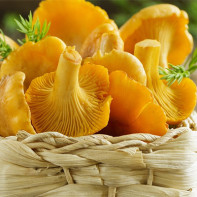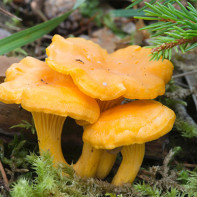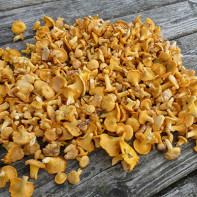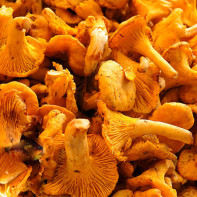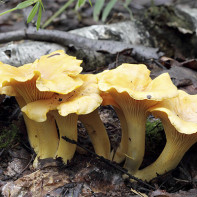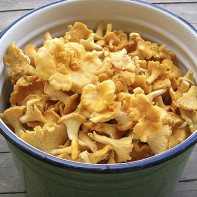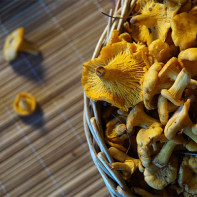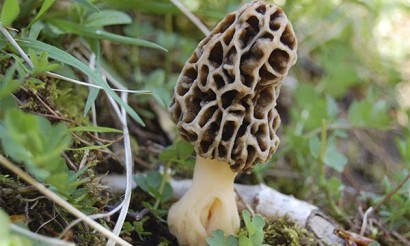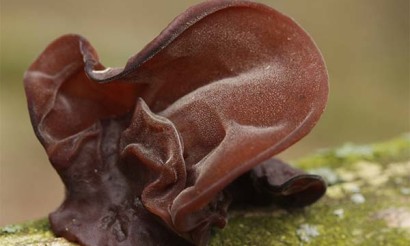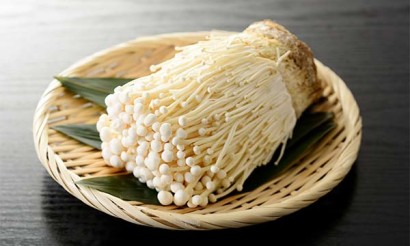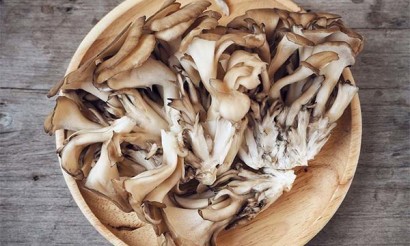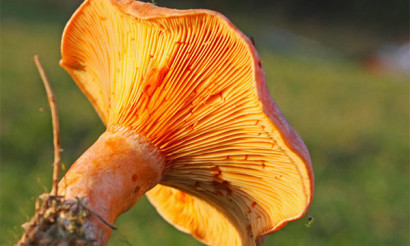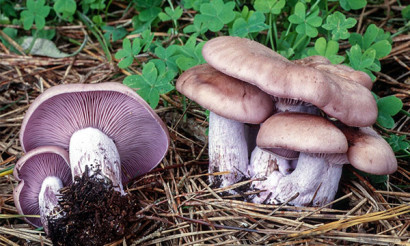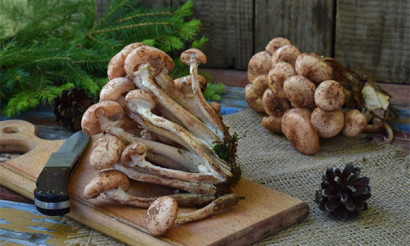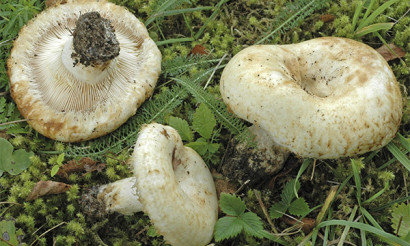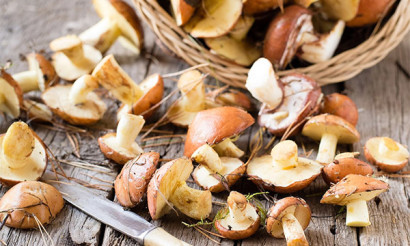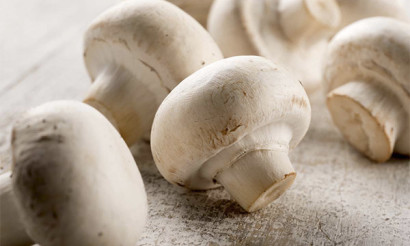Chanterelles mushrooms: useful and medicinal properties, recipes
Chanterelles are considered one of the most popular types of edible mushrooms. They uniquely combine an amazing taste, rich composition and beneficial effects on the body. The combination of these factors has made chanterelles incredibly popular not only with professional mushroom growers, but also with ordinary consumers. What exactly is it useful, how to cook it correctly, and under what circumstances should refuse to use - let's deal.
- What chanterelles look like and where they grow
- Types
- Composition and calories
- Useful and medicinal properties of chanterelles
- It is possible to give chanterelles to pregnant and nursing women
- With what age chanterelles can be given to children
- Chanterelles usefulness for weight loss
- Useful properties of dried chanterelles
- How to Dry
- Chanterelles in Folk Medicine
- Tincture based on chanterelles
- Chanterelles mushrooms in cosmetology
- Harms and contraindications
- How and how much to store chanterelles
- Can I freeze?
- How to cook chanterelles: Recipes
- How to cook them
- Chanterelle Soup
- How to marinate chanterelles over winter
- How to boil chanterelles before frying
- Is it possible to eat raw chanterelles
- Interesting Facts about Chanterelles Mushrooms
What chanterelles look like and where they grow
The caps of mushrooms growing in our latitudes can have a diameter of 1.5 to 7 cm. In other climatic zones, they can be as large as 10 cm. They have a characteristic yellow or reddish color and a non-standard shape: convex, concave or multifaceted.
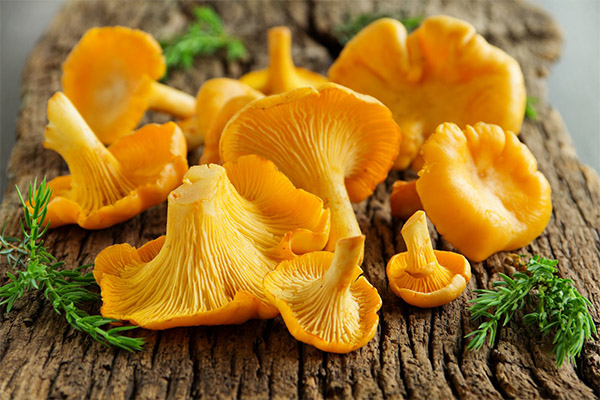
The height of the stalk ranges from 3 to 10 cm. It is fully fused to the cap and has an identical color. The width of the stalk is not uniform (it will be larger closer to the cap). The chanterelle has a very fleshy flesh.
You should be extremely careful when picking this type of mushroom because there is a twin of the fungus - the poisonous false chanterelle. It differs from its safer counterpart by location: In particular, it cannot be found on ordinary plots of land, only on decayed woody debris. Another dangerous colleague of the chanterelle is omphalote. But it does not occur in our latitudes, as it grows only in subtropical climates.
Species
The chanterelle combines a large number of subspecies:
- Common chanterelle. This is a classic variety. It is also popularly called the cockerel or chanterelle yellow. It is characterized by its characteristic acidity and complete absence of worms. The mushroom grows in coniferous and deciduous forests. The best time to pick it is from the last week of August to late fall.
- Gray chanterelle. This species has a gray hue, the diameter of the cap does not exceed 6 cm, the length of the stalk - 8 cm. The difference between the species is that the cap has wavy edges with a pale gray cast. This mushroom does not have a pronounced smell or taste. Its collection time is from late July to early November. Gray chanterelle can be found in the forests of Ukraine, Europe and Russia, but it is not as popular as the common chanterelle.
- The red chanterelle. Another edible specie, the chanterelle also has a rich red or pinkish hue. It's a small mushroom with a maximum cap diameter of 2 cm and a stem length of 4 cm. It has a fleshy flesh and the cap is slightly concave in the center. The red chanterelle is found only in the forests of North America. It is harvested at the end of summer.
- The velvety chanterelle. Like all the previous species, it is an edible species, but is very rare. The most common color type is pale orange. The height of the stalk of the mushroom is in the range from 2 to 4 cm, the diameter of the cap is not more than 6 centimeters. The stalk is quite thin (up to 1 cm in diameter). The cap is funnel-shaped. The mushroom has a neutral flavor and a pleasant, slightly sour taste. Most often found in Eastern Europe.
- Chanterelle yellow. As is clear from the name, this variety is characterized by a rich yellow color. The size of the cap of this chanterelle varies between 2 and 6 cm, the length of the stalk rarely exceeds 4 cm, while its diameter usually doesn't exceed 1 cm. Both parts of the mushroom are inseparable from each other, just like other chanterelle varieties. The flesh is not distinguished by any pronounced taste and smell.
- Tubular chanterelle. This is another subspecies of chanterelle that can only be collected in North America. Its cap size is classic: 2-6 cm, while the foot size never exceeds 8 cm. But its girth is very small: 0.5 mm on average.
Composition and calories
In 100 grams of chanterelles only 19 calories. This makes them an excellent dietary menu product. Protein - 1.5 g, fat - 1.1 g, carbohydrates - 1 g, dietary fiber - 7 g, water - 88 g.
The chemical composition of chanterelles is due to the presence of:
- trace elements (selenium, iron, copper);
- Vitamins (B3, B5, B9, D);
- macronutrients (sodium, phosphorus, potassium, calcium, magnesium).
Useful and medicinal properties of chanterelles
- The chanterelle is famous for its rich composition: these are trace elements, vitamins and minerals. In particular, it has a large amount of vitamin C. At the daily rate of 90 g in 100 grams of chanterelles - 34 mg. Ascorbic acid is the basis for the full functioning of the immune system. It protects against viral, fungal and bacterial infections, is important for tissue repair and cell growth, is necessary for the complete absorption of iron.
- In sufficient quantity in chanterelles present and vitamin A - 142 micrograms per 100 grams (with a daily rate of 900 micrograms). Approximately the same amount found in carrots. Vitamin A refers to the category of antioxidants, is essential for normal metabolic processes, healthy skin, hair and nails. It is essential for restoring vision, and noted its effectiveness in the fight against many viruses and bacteria. Retinol promotes the production of sex hormones, has a positive effect on the reproductive system.
- Another vitamin that prevails in chanterelles is D. At a daily rate of 10 micrograms in 100 grams of this variety of mushrooms - 5.3 micrograms. It is impossible to imagine a complete daily diet without vitamin D. It is synthesized by sunlight, but the body can also get it from food. Ergosterol is responsible for calcium and phosphorus metabolism, it is a key component in the formation of bone and dental tissue. It is recognized as effective in the prevention of ovarian and breast cancer.
- It has also proved the presence of chromium in chanterelles. In 100 grams of mushrooms is 24 micrograms. This amount - half of the daily rate. Chromium is of great importance for health. It is responsible for the removal of cholesterol, carbohydrate and lipid metabolism, the accelerated repair of tissues. In its deficiency, a person feels tremors in the limbs, quickly tired, suffering from hair loss and chronic insomnia.
- Chanterelles added to the daily menu can compensate for 18% of the daily norm of potassium. Together with sodium, it is responsible for the body's water balance. Without potassium normal transmission of nerve impulses and muscle contraction is impossible, it indirectly affects the cognitive function of the brain, reduces the manifestation of allergic reactions.
Can chanterelles be given to pregnant and nursing women
Mushrooms contain twice as much protein as most vegetables and even meat. They are also rich in carbohydrates, minerals: they have the most iodine, phosphorus, zinc and calcium.

Iodine is a key element for the full functioning of the thyroid gland, an essential component to support women's reproductive health. Deficiency of phosphorus in pregnant women can lead to rapid weight loss, chronic fatigue. It is also responsible for regulating the heart and vascular system, and activating fetal growth. Zinc reduces the likelihood of premature birth. Calcium is the basis for the full health of the mother and child. It is necessary for the development of all baby tissues, the formation of bones and teeth.
But despite the benefits that the use of chanterelles can bring the body, pregnant and lactating women are better off avoiding them. Although, to a greater extent, this applies to mushrooms growing in the woods. The so-called "cultivated" chanterelles (grown in artificial conditions) can be eaten, but only in minimal quantities, using them no more than once a few weeks.
Important! Pregnant women should not eat pickled and canned mushrooms because of the high concentration of salt and spices. This may provoke edema.
As for adding chanterelles to food for nursing mothers, then here the opinion of experts is divided. Some believe that their useful properties outweigh all the potential risks. In particular, chanterelles help:
- fight postpartum depression, fatigue;
- improve muscle tone;
- Strengthen eyesight.
But this is true only for chanterelles that were grown in greenhouses with strict quality control of the soil.
Another group of doctors is categorically against the consumption of chanterelles by young mothers. This is due to the fact that through the breast milk potential toxins accumulated in the structure of the mushroom will be transmitted to the child. Forest chanterelles should be especially careful.
At what age can chanterelles be given to children
One of the characteristic properties of any mushroom, including chanterelles, is their ability to accumulate potentially dangerous salts of heavy metals. It has to do with the structure of the mushroom, so it is impossible to neutralize it. After a child consumes mushrooms, all the components that make up their structure will go to the liver. For the liver, even for an adult, this can be a strong blow, since its detoxification capabilities are not limitless. Consumption of mushrooms can lead to irreversible liver problems in the baby.
In addition, mushrooms belong to the category of heavy protein for digestion, and the gastrointestinal tract of a small child is not yet ready for its digestion. Not yet formed a sufficient number of enzymes that contribute to its breakdown. Therefore, children can be given chanterelles no earlier than 7 years. Ideally, parents should postpone the introduction of chanterelles in the diet of a child under 10-12 years.
The usefulness of chanterelles for weight loss
Chanterelles - this is not only a treasure trove of useful substances, but also the basis for a dietary menu. This is a low-calorie product, so it will contribute to rapid weight loss. In 100 grams of fresh mushrooms - only 19 kcal, in stewed already little more - 38 kcal, in boiled - 24 kcal. With any method of preparation chanterelles remain an excellent basis in the transition to a proper diet. Their great advantage is that, despite the minimal number of calories, they are dominated by protein. It provides a feeling of fullness without adding unnecessary fats and carbohydrates to the diet.

There is no special diet on chanterelles, but there are certain rules for their consumption when losing weight:
- Chanterelles are best combined with uncooked rice, durum wheat pasta and buckwheat.
- Be sure to add mushrooms and stewed vegetables (bell peppers, broccoli, asparagus, green beans).
- The best way to eat them is in a stew or boiled form.
- Chanterelles can completely replace meat, especially fatty pork.
Such a menu provides a complete and balanced diet, while at the same time will not contribute to weight gain. With this diet, nutritionists also recommend reducing the amount of dairy products, completely exclude the use of refined sugar.
Useful properties of dried chanterelles
The rich yellow color of the mushrooms suggests a high concentration of carotene (like in carrots). Dried chanterelles also contain B vitamins, A, PP, zinc, copper and all eight essential amino acids. They also have a high concentration of substances that promote tissue regeneration, particularly mucous membranes, as well as immunomodulators that increase the body's resistance to all kinds of infections.
How to Dry
You can dry chanterelles in any way: under the open sun, in the microwave or in the oven. Today, there are also special driers on sale, which greatly simplify this process.
Store dried mushrooms is best in closed glass jars, cloth bags or metal containers. It is very important to exclude the possibility of moisture seepage.
If a glass container is used for storage, then beforehand you should pour just a little bit of alcohol into it, light it and cover it with a lid. This should be done in order to remove all oxygen from the container, which will stimulate the accelerated oxidation of products. Simply put, this will prevent chanterelles from getting moldy.
Over-dried mushrooms do not have to be disposed of. You can grind them and transfer them to a tin can. The resulting powder is ideal for adding to salads, first courses and sauces.
The chanterelles in traditional medicine
One of the unique properties of this variety of mushrooms is that they have increased activity against any helminths. This is because chanterelles contain quinomannose, the substance that makes these mushrooms an excellent natural helminthic agent with a broad spectrum of action. But this is a rather sensitive substance, which does not tolerate heat treatment and is completely destroyed under the influence of high temperatures (more than 40 degrees Celsius). Therefore, in the fight against parasites chanterelles should be eaten dried, in the form of powder or vodka tincture. Chinomannose is fully absorbed by the human body and poses no threat to health. It kills not only the adult but also the larvae. This is its main advantage compared to most substances that target only sexually mature parasites.
Another component that makes chanterelles very popular with naturopaths is ergosterol. It has a positive effect on the production of enzymes by the liver, so regular intake of chanterelles will help in its cleansing.
Chanterelles also help in the fight against inflammation of any localization and have an immunostimulatory effect. Many Chinese doctors recommend taking chanterelles for the first vision problems. This is due to the high concentration of vitamin A in their composition.
Tincture based on chanterelles
One tablespoon chanterelles should be pour 200 ml of vodka, leave to infuse for a week. The composition should be stirred well every day. After the resulting remedy do not filter, and before taking it just need to shake well.
How to take:
- In the antiparasitic program: a few teaspoons before going to bed for three weeks.
- In diseases of the pancreas and liver (cirrhosis, obesity): in the evening, one teaspoon for 4 months.
- To cleanse the liver: one tablespoon for 2 weeks.
Chanterelle mushrooms in cosmetology
For cosmetological purposes, mushrooms were used even in the Roman Empire. Tinctures based on chanterelles were popular for fighting various skin rashes and redness. In Asian countries chanterelles were also held in high esteem. They were used to make natural shampoos, masks, and creams that could slow down age-related changes.
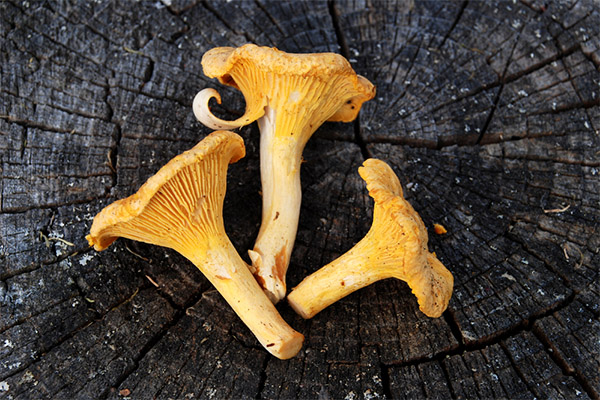
But chanterelles were the most popular in Russia. They were included in a huge number of skin care products. The juice of the mushrooms brought out warts, strengthened the roots of the hair.
Modern companies also pay deserved attention to this variety of mushrooms. Extracts of chanterelles can be found in many hand and nail care lotions, masks and tonics. The demand for them is due to the presence in the composition of microcomponents that maintain an optimal supply of moisture in the epidermis, accelerate tissue regeneration and suppress the manifestation of allergic reactions.
Harms and contraindications
If chanterelles are collected in environmentally clean places or buy artificially grown mushrooms, the harm from them will be minimal. As mentioned above, the main threat they pose to human health is associated with the accumulated heavy metals in them. Their excessive concentration leads to cancer, can provoke premature aging and the early onset of diseases typical of older people.
Contraindications to the use of chanterelles:
- children under the age of 7 years;
- Pregnancy (it is better to discuss this aspect with the doctor supervising the woman);
- Individual intolerance;
- the presence of severe gastrointestinal diseases.
How and how long to store chanterelles
Like any other mushrooms, chanterelles do not tolerate long storage in fresh form. Therefore, many housewives are looking for alternative options for preserving them. The most common methods are drying or canning. Many salt mushrooms for the winter, but in the case of chanterelles can simply lose their presentable appearance.
It is undesirable to leave mushrooms in raw form for a long time. Immediately after collecting them, clean them and put them in the refrigerator. There they can be stored for no more than one day, and then you need to choose the best way to prepare them. The easiest way to stick to the following scheme: clean the mushrooms, pour water, rinse and boil. In boiled form, they will remain edible for 5 days.
Roasted chanterelles can be stored in the refrigerator at least a whole winter. To do this, you need to carefully peel each mushroom and boil it. This will help to immediately remove the bitterness. After this, fry them in sunflower oil until they are fully cooked. For storage, it is easiest to use ordinary glass jars. Their volume depends on the number of mushrooms. Before putting the jar, it is desirable to give boiling water to sterilize. Next, lay chanterelles and pour oil so that they are completely covered with it. Cover with lids and put them in the refrigerator.
Can I Freeze
If you want to preserve the unique hue of chanterelles, it is better to freeze them. Unlike heat treatment, with this approach they will retain the entire set of amino acids, micro- and macronutrients.
Why are chanterelles bitter after freezing
Many people note that mushrooms after freezing have an unpleasant bitter aftertaste. This is the case if they were collected in a spruce forest or in places with insufficient soil moisture. To get rid of the bitterness after defrosting is very easy.
To do this, boil the mushrooms for 15 minutes, then drain the water, cool chanterelles, place them in containers or bags and put them back in the freezer. Experienced housewives recommend putting chanterelles in small containers, each of which should be designed for one dish. This is due to the fact that during secondary freezing chanterelles completely lose all their useful properties.
How to cook chanterelles: Recipes
In cooking, this variety of mushrooms is very widely used. In addition to its rich composition, chanterelles have expressive taste qualities. This makes it possible to turn an ordinary dish into a restaurant dish.

How to roast
Fried mushrooms are simple and accessible even to the novice cook. Unlike varieties grown by man, wild chanterelles have a natural mushroom flavor. And roasting can only enhance it.
All you need to fry chanterelles:
- the mushrooms themselves;
- One onion;
- a few cloves of garlic;
- half a bunch of dill and parsley;
- butter and vegetable oil.
Technological process:
- Clean, sort mushrooms and soak them in water for 15-20 minutes, rinse under running water.
- If the mushrooms are too large, slice them.
- We choose water in a pot, put it on the fire, put chanterelles in it and boil them for 20 minutes after boiling.
- Chop the onions. The size and type of cut each hostess chooses for herself, but it is best to chop it into small cubes or cut into quarters.
- Fry the onion in melted butter until classic golden.
- Add mushrooms to the onions, stir everything and fry for 15-20 minutes, you can tell if they are ready by the color changing - they should become even more colorful.
- Spread it on plates and sprinkle with greenery.
Chanterelle soup
Chanterelles are considered the best variety of mushrooms for first courses. Let's consider an original and at the same time simple in execution recipe with their use.
Country chanterelle soup. The specified ingredients in the recipe are enough for two servings. Cooking time - 120 minutes. For the soup you will need:
- 300 beef bones;
- 400 grams of fresh chanterelles;
- 1 onion;
- 1 carrot;
- 2 pcs. potatoes;
- 1 garlic clove;
- salt, pepper to taste.
How to cook:
- The first thing we do is to make a broth. Beef bones are the most tasty, but if you do not have them, you can also use pork bones. The bones are washed, put into a saucepan and poured with cold water. We put it on a high heat and bring it to a boil. Then be sure to remove the foam. Some hostesses drain the water completely and continue to cook the soup already on a clean. Everyone chooses the most optimal based on his or her own discretion.
- After cooking the broth on low heat. It is very important not to let the water to boil too much, because otherwise you can not get a boil. The bones should be boiled for an hour. The degree of readiness is very simple to determine - the meat should easily come off the bone. We pull out the bones, cut the meat or break it up into fibers and put it back to the pot.
- While the broth is boiling, prepare chanterelles. Preferably, they should be well cleaned and selected. There should not be any defects on the surface of the mushroom. It is important to rinse them thoroughly from sand and small debris. Suitable mushrooms put in a bowl, pour boiling water and leave for 15 minutes. After rinsing them again with running water.
- Peel the vegetables and finely chop them. Potatoes should not be too finely chopped. Finely chopped onions and carrots fry in sunflower oil. To make the soup more healthy and dietary, all the vegetables immediately after cleaning, we transfer them to the broth. It should be cooked on low heat, stirring systematically, until the potatoes are fully cooked.
- Last in the pot we send mushrooms. Cut them or not - it depends on personal taste and the size of chanterelles. Cook them for 10-15 minutes more. Note that the salt and pepper need to be added at the very end. This is due to the characteristic taste of chanterelles.
This is a great summer soup, with which you can be perfectly satiated. Its balanced composition will ensure a complete intake of proteins, carbohydrates and fats.
How to pickle chanterelles over the winter
This is one of the most affordable recipes for pickling chanterelles. You will need:
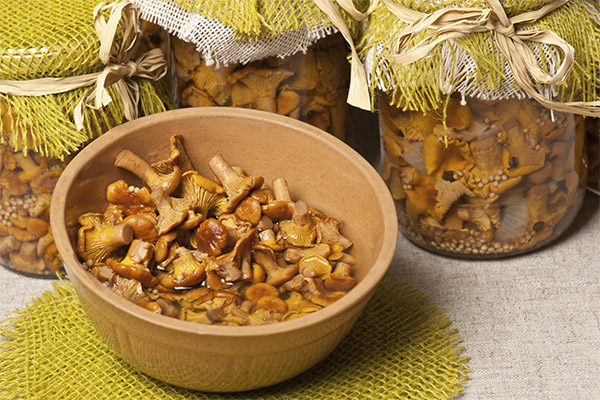
- 1.5-2 kg of chanterelles;
- 8-10 cloves of garlic;
- 15-18 peppercorns of black pepper (to taste);
- 3 tablespoons salt;
- One umbrella of dill for each jar;
- A few leaves of black currant.
How to prepare:
- First, wash chanterelles under running water. Transfer to a colander and let the water drain completely.
- Pre-sterilize the jars and in each of them put a couple of currant leaves (they must be dry, intact, without any damage).
- Put the mushrooms in the jar in layers, each of which is sprinkled with salt, peppercorns and chopped garlic. The last layer is dill, and make sure to put some kind of a small weight on top. This is to make the chanterelles begin to secrete juice.
- For 24 hours we put our jars in the refrigerator. After removing the weight from each jar and closing them with the usual reusable lids. If you can put the mushrooms in the basement, this will only improve their taste and accelerate fermentation.
How much to cook chanterelles before frying
Chanterelles should be boiled for at least 20 minutes:
- We put them in cold water and send them to high heat.
- After boiling, remove the foam that has formed.
- We turn down the heat to minimum and continue to cook the mushrooms for 15-20 minutes.
- When the chanterelles boil, toss them on a sieve or colander and leave for a few minutes to drain.
- Finely chop the cooled mushrooms (this will preserve not only their taste, but also all the useful substances in the composition).
Can I eat chanterelles raw?
This issue is related to the fact that when the mushrooms are exposed to high temperatures, most of the useful substances are destroyed. Therefore, in folk medicine, many people consume chanterelles raw. Most often they are pre-frozen or pickled.
Interesting facts about chanterelles mushrooms
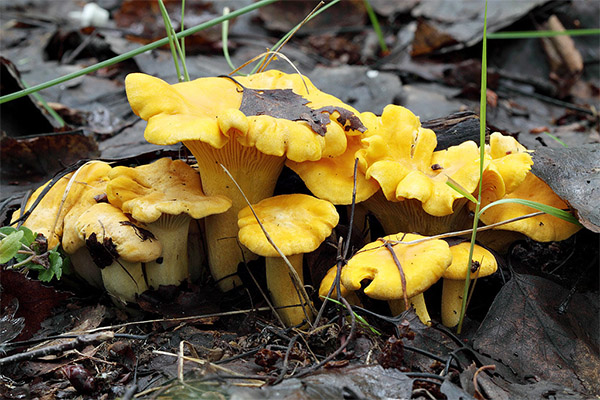
- During the Renaissance in France, chanterelles were as much a delicacy as a truffle for modern man. They were a real highlight of any menu of aristocrats. In Scandinavian countries the mushroom was considered an aphrodisiac that enhanced a man's sexual drive. Therefore chanterelles could be seen among the main dishes of the wedding feast.
- In the former Soviet Union it is commonly thought that chanterelles grow exclusively in the midlands, but this is a misconception. This unique variety of mushroom is widely represented in South America and even in Africa. The richest chanterelles is considered to be Latvia. Here the first mushrooms can be found at the end of spring, and the last ones - after the first frosts. If the winter is warm, mushroom pickers can pick a few kilos even in mid-December.
- The largest chanterelles were recorded in California. The weight of a single mushroom reached 500 grams.
«Important: All information on this site is provided for informational purposes only for educational purposes only. Before using any recommendations, please consult a specialist. specialist. Neither the editors nor the authors shall be liable for any possible harm caused by materials."

